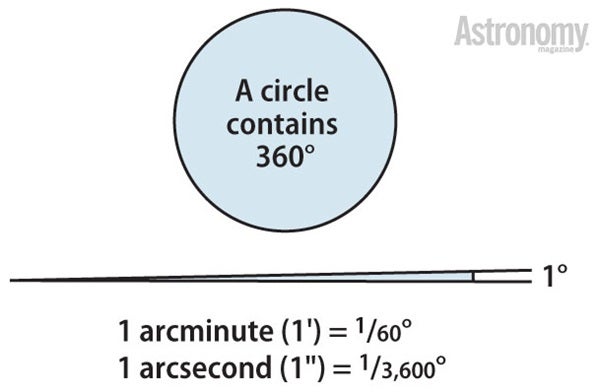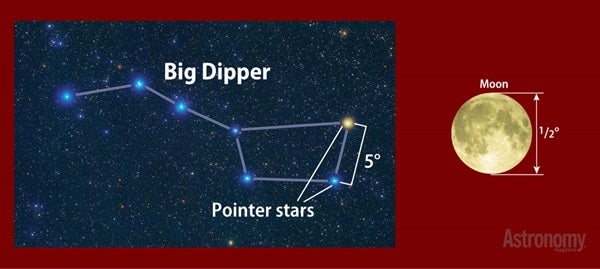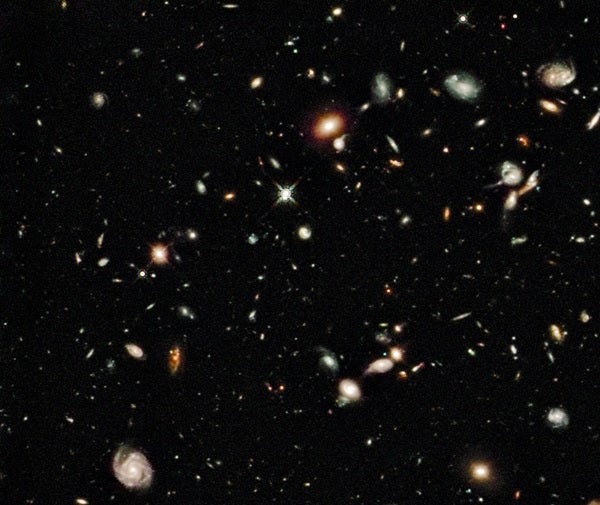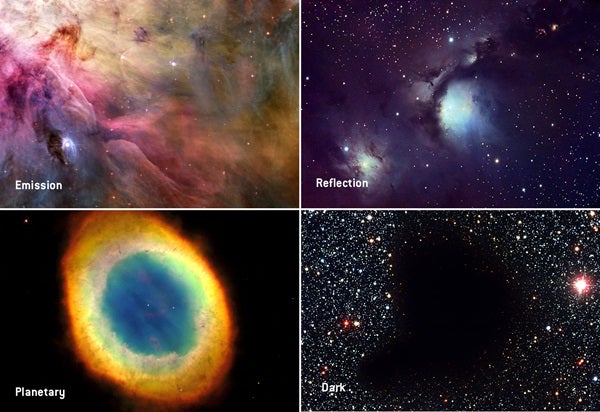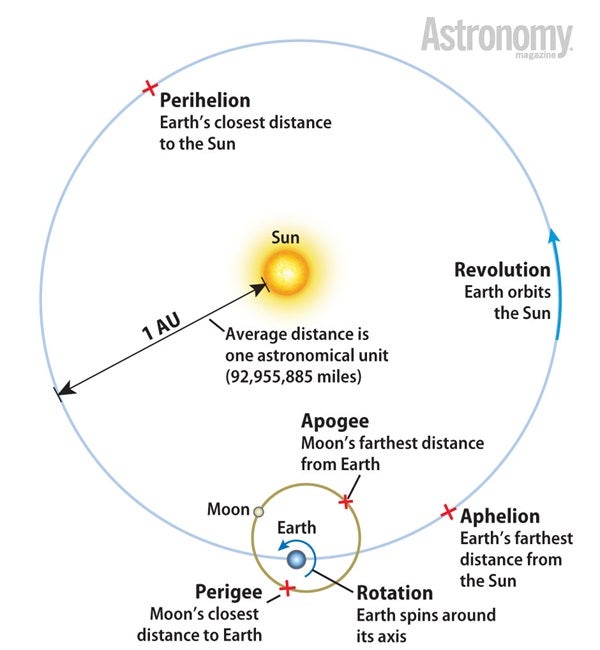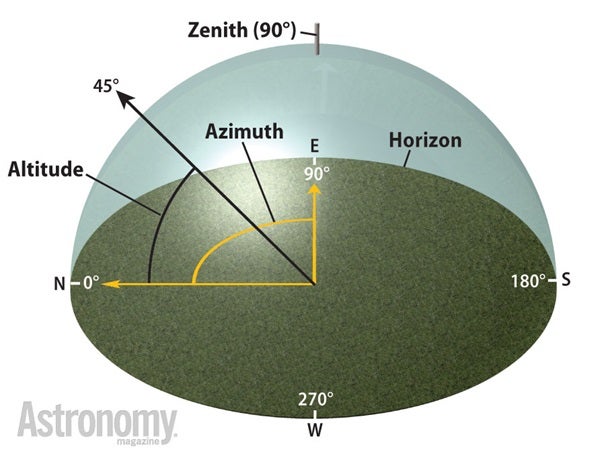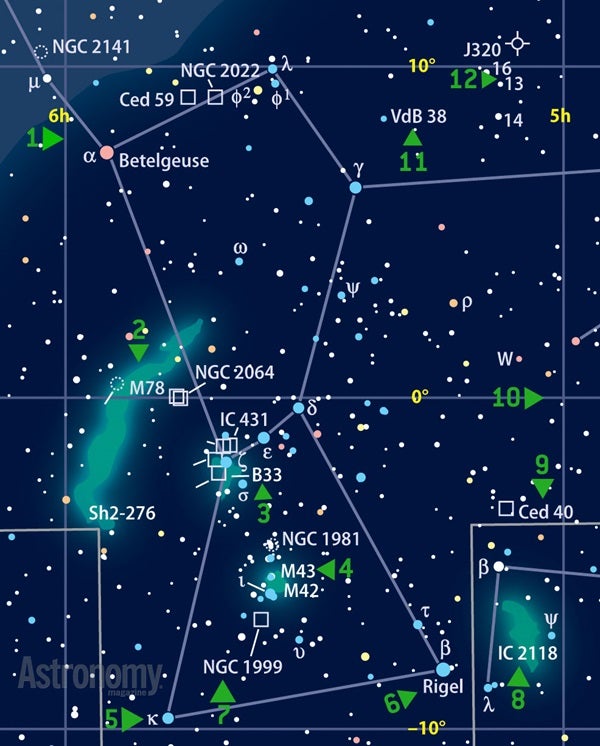This article is for all you dictionary users. If you’re often confused by astronomy terms, your friends don’t have to find out. Just bookmark or print this article, and keep it where it’s handy. Don’t feel bad about it. Your friends probably will do the same thing.
Angular measure in astronomy confuses beginners because small angles use the same symbols as feet and inches. When astronomers describe the apparent size of a celestial object, 1′ describes an angle of 1 arcminute (1⁄60 of a degree). Likewise, 1″ defines the small angle of 1 arcsecond (1⁄60 of an arcminute). For a quarter to subtend an angle of 1″, you would have to view it from about 3 miles (5 kilometers) away.
Apparent size
How big an object appears to us has nothing to do with its real size. What matters more is the distance between us and the object.
Know the four basic types of galaxies
Four main galaxy classifications exist. Elliptical galaxies have shapes that range from round to long and thin. They contain old stars, little gas, and few star-forming regions. Giant ellipticals are the largest galaxies, while dwarf ellipticals rank as the smallest.
Spiral galaxies look like pinwheels, or would if their orientations all were face-on to our point of view. Spirals contain a central bulge surrounded by a disk, and many spirals (such as the Milky Way) feature a central bar from which their arms originate.
Irregular galaxies generally appear featureless. They don’t fall into either elliptical or spiral categories. Many have star-forming regions.
Astronomers classify peculiar galaxies unusual in one or more ways such as brightness, amount of dust, or shape. Peculiar galaxies generally form because of gravitational interactions between galaxies.
Don’t let nebula nomenclature scare you
Astronomers divide nebulae into four categories. Emission nebulae glow red because their hydrogen atoms absorb ultraviolet radiation from nearby hot stars and re-emit it as reddish light. Reflection nebulae shine with a bluish tint because they reflect and scatter starlight. Earth’s clear daytime sky appears blue also because of scattering. Planetary nebulae (named two centuries ago because they appeared disklike) form from Sun-like stars near the end of their lives. The star’s outer layers slowly expand away from the hot core until the core no longer illuminates them. Dark nebulae, huge clouds made of dust and cold gas, block the light from stars and bright nebulae behind them.
Color from charge-coupled device (CCD) images
The term “LRGB” refers to color-filtered black-and-white images obtained with a CCD (digital) camera. Imagers combine these exposures to form a color image. L stands for luminance, usually an unfiltered exposure designed to capture detail. R, G, and B define exposures through red, green, and blue filters, respectively. These exposures capture the object’s color information.
Planet motions and positions include similar-sounding terms. Rotation means spinning. Earth rotates once a day. Revolution means orbiting another object. Earth revolves around the Sun once a year. The average Earth-Sun distance is an astronomical unit (92,955,807 miles [149,597,870,700 meters]).
For other terms, remember peri means “near” and ap means “far.” An object’s closest approach to the Sun is perihelion, and its farthest point is aphelion. Perigee is an object’s closest approach to Earth. Apogee is the point where it lies farthest from Earth.
The altitude-azimuth (alt-az) coordinate system is easy to learn. Azimuth measures an object’s position (in degrees) along the horizon, starting at north (0°) and passing through east, south, and west. Altitude measures height above the horizon (0°). An object overhead has the maximum altitude — 90°. So, an object halfway up in the sky due west has an altitude of 45° and an azimuth of 270°.
Star-chart lingo
1. Lines of right ascension
R.A. is the celestial equivalent to longitude. Astronomers attached the grid to the sky, so objects’ right ascensions don’t change as Earth rotates. R.A. is measured in hours, minutes, and seconds.
2. Sharpless object (Sh)
American astronomer Stewart Sharpless cataloged 313 HII regions (star-forming areas composed of hydrogen that glow because of irradiation from nearby stars).
3. Barnard object (B)
American astronomer Edward Emerson Barnard (1857–1923) cataloged 349 dark nebulae in A Photographic Atlas of Selected Regions of the Milky Way.
4. Messier object (M)
French comet hunter Charles Messier (1730–1817) created a catalog that contains 109 of the finest deep-sky objects.
5. Bayer (Greek) letter
German mapmaker Johannes Bayer (1572–1625) labeled the brightest stars of each constellation using Greek letters. His system appeared in Uranometria in 1603.
6. Star name
Some 200 bright stars have common names. Most star names come to us from Arab and Greek astronomers and their star charts.
7. New General Catalogue (NGC) object
In 1888, Dreyer listed 7,840 deep-sky objects in a catalog that appeared in Memoirs of the Royal Astronomical Society.
8. Index Catalogue (IC) object
English astronomer John Louis Emil Dreyer (1852–1926) published two addenda to his New General Catalogue (see above), in 1895 (containing 1,529 objects) and 1908 (with 1,496 objects).
9. Cederblad (Ced) object
Swedish astronomer Stefan Cederblad cataloged 330 bright, diffuse galactic nebulae and published a catalog in 1946.
10. Lines of declination (Dec.)
Measured in degrees, they form the second coordinate. The starting point is Earth’s equator projected into space. Declinations north of the celestial equator are positive, and those south are negative.
11. van den Bergh (vdB) object
Canadian astronomer Sidney Van den Bergh cataloged 158 reflection nebulae and published a catalog in 1966.
12. Flamsteed numbers
English astronomer John Flamsteed (1646–1719) produced Atlas Coelestis, published posthumously in 1729. In this atlas’ French edition, numbers labeled each constellation’s stars.

